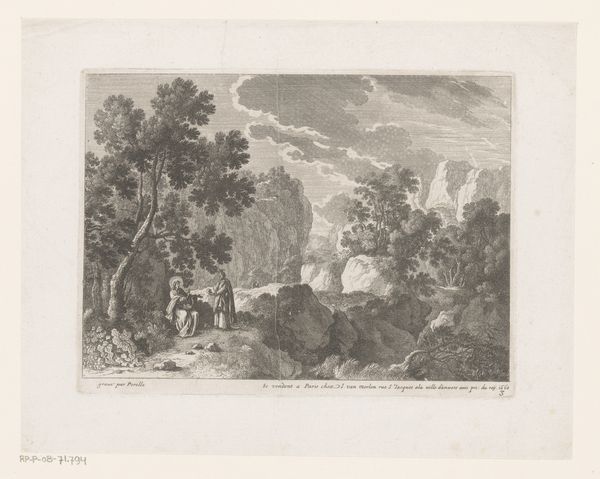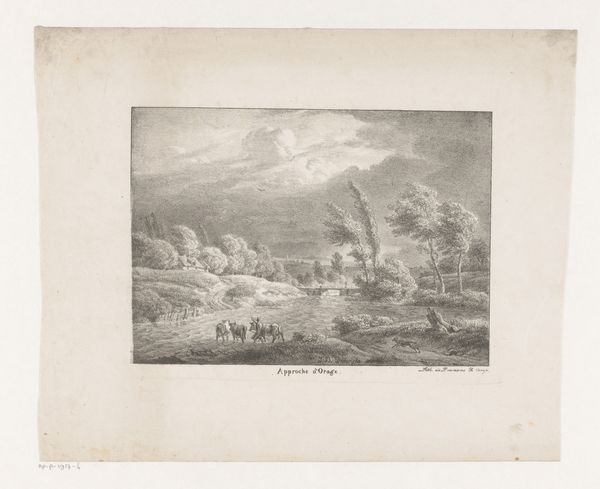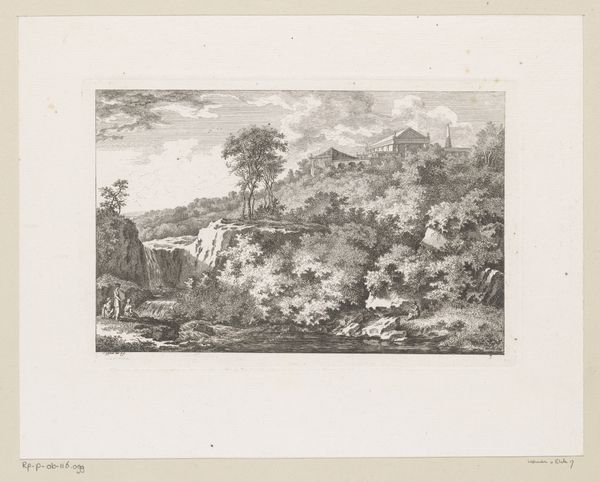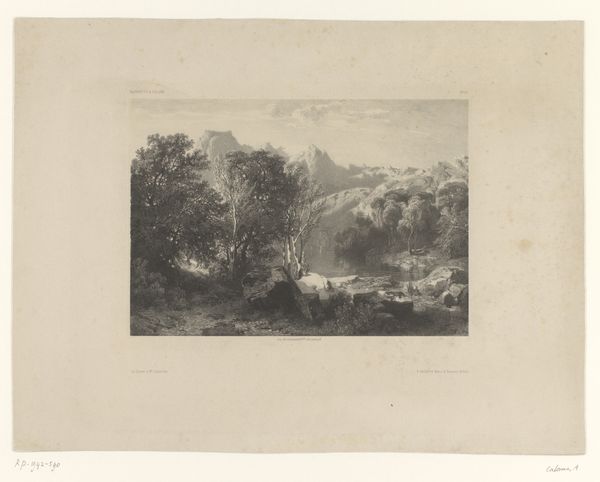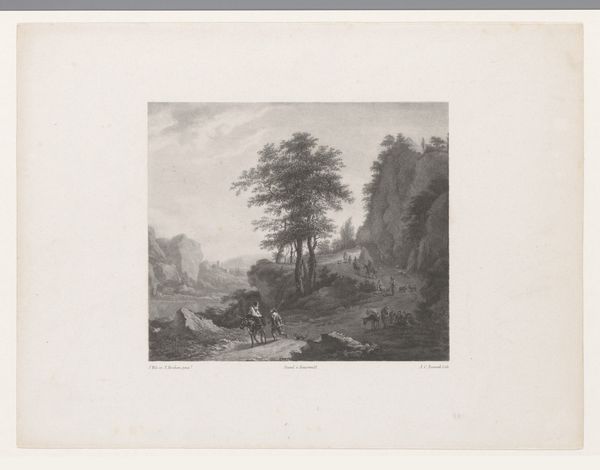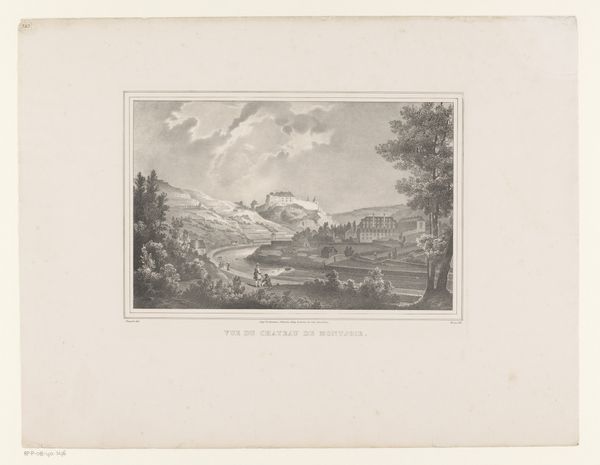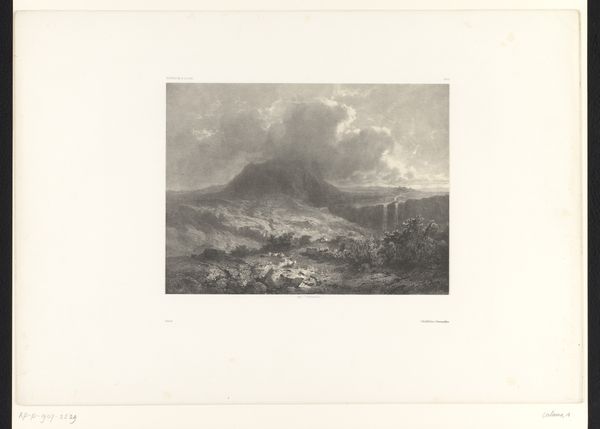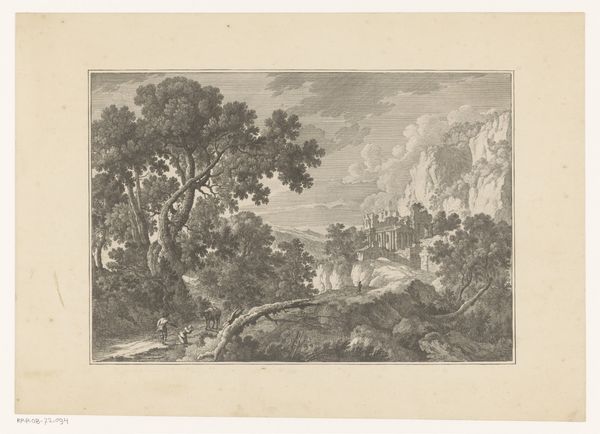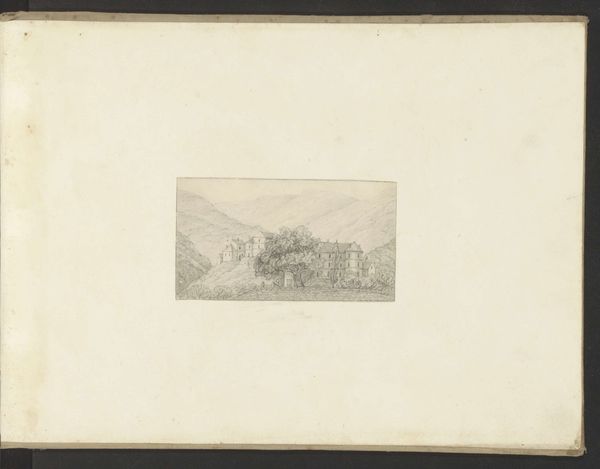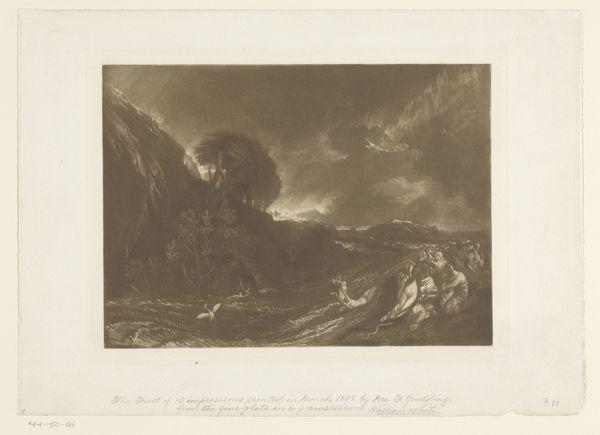
drawing, paper, ink
#
drawing
#
landscape
#
waterfall
#
paper
#
ink
#
romanticism
#
watercolor
Dimensions: height 125 mm, width 177 mm
Copyright: Rijks Museum: Open Domain
Christian Haldenwang created this landscape around the turn of the 19th century using etching, a printmaking technique reliant on the corrosive action of acid. To create this image, Haldenwang would have coated a metal plate with a waxy, acid-resistant substance, then scratched his composition into the coating, exposing the metal. The plate was then immersed in acid, which bit into the exposed lines. By varying the depth and thickness of these lines, he was able to achieve a wide tonal range. The final print on paper bears the marks of this labor-intensive process. Consider the precision required to render the delicate foliage and cascading water. Haldenwang likely burnished areas of the plate to create smooth gradations of tone. Etching, like other forms of printmaking, was tied to a growing culture of reproducibility and consumption in the late 18th and early 19th centuries. Understanding the processes and materials used to create this image gives us insight into the print’s cultural significance, moving beyond traditional distinctions between fine art and craft.
Comments
No comments
Be the first to comment and join the conversation on the ultimate creative platform.
